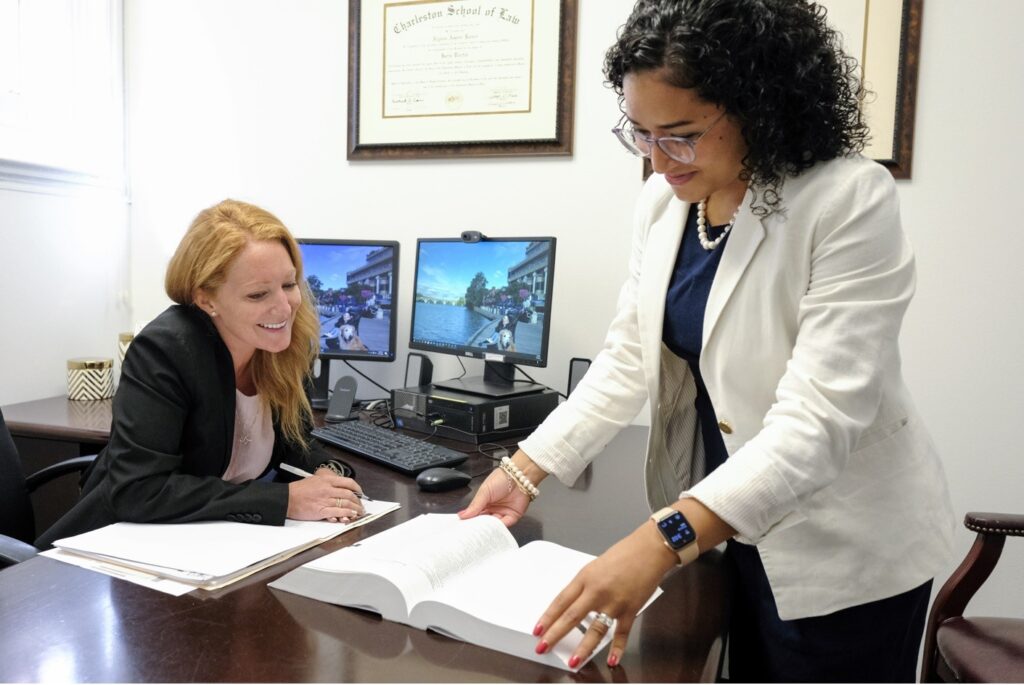General
Immigration Law in the Heartland: How Midwest Firms Are Making a Global Impact

There’s something poetic about Kansas City. Maybe it’s the jazz echoing from the sidewalks, or the way barbecue smoke lingers like a good memory. But behind the soulful notes and the ribs lies a hub of immigration law reshaping people’s lives from every continent. And at the center of it? A sharp-witted legal mind named Yanky Perelmuter, founder of Midwest Immigration Law, is making the Midwest feel more like the center of the world than a flyover zone.
We don’t often associate Kansas—America’s wheat and cattle country—with global mobility. That’s usually reserved for flashy coastal cities. But here’s the plot twist: immigration doesn’t care much about zip codes. When your family’s future is at stake or your H-1B renewal is hanging by a thread, you don’t need a lawyer with an office overlooking Central Park—you need one who knows the USCIS like their morning coffee order, is brutally honest, and can file that motion to reopen faster than you can say “Notice of Intent to Deny.” That’s the vibe at Midwest Immigration Law—and believe me, it’s working.
From Kabul to Kansas City: The Global Map of Local Impact
Over 281 million people are currently living outside their country of birth. According to the latest UN data, that’s about 3.6% of the global population. Immigration has never been more complex—or more necessary. And while the headlines are dominated by border crises or parliamentary brawls in Europe, the real action is happening in quieter corners of America, where seasoned attorneys translate geopolitical chaos into paperwork that sticks.
As a Kansas City immigration attorney, Perelmuter doesn’t just “help people with visas.” He translates emotional chaos into legal structure, helps split families find reunification through Form I-130, and turns nightmares of ICE raids into court victories. He’s also doing it with what I can only describe as a calming smile and more affordable rates than most big-city firms.
If you think immigration is just about “getting in,” think again. Today, it’s about staying in, staying compliant, renewing status, appealing decisions, and doing it all while hoping the next change in administration doesn’t undo five years of progress. Welcome to modern U.S. immigration law, where every case is a chessboard, and every move counts.
Why the Midwest Matters More Than Ever

Here’s a global irony: while cities like San Francisco and New York drown in tech visa petitions and green card backlogs, firms like Midwest Immigration Law in Kansas quietly thrive. There’s more attention to detail, more room for individual clients, and—let’s be real—a lot less pretense.
Kansas City immigration attorneys are not writing press releases about every court win, but they are winning. They’re filing waivers that get approved. They’re navigating the labyrinth of U.S. Citizenship and Immigration Services (USCIS) policies like veteran spelunkers. And they’re doing it without charging the equivalent of a Tesla Model Y for a fiancé visa.
The myth that top-tier immigration legal help only exists in D.C. or L.A. is as outdated as Ellis Island. Especially in 2025, when a simple status lapse can trigger an ICE detainer, and green card interviews feel more like FBI interrogations than family milestones, having expert legal counsel close to home can mean the difference between stability and deportation.
When the Immigration System Feels Like a Netflix Thriller
There’s no sugarcoating it: U.S. immigration law is complex. And I don’t mean “you-should-read-the-fine-print” hard. I mean “what-do-you-mean-I-was-supposed-to-file-a-form-I-765-along-with-my-EAD-renewal-in-triplicate-while-on-one-foot” hard.
Did you know that in 2023, USCIS denied over 27% of initial H-1B petitions? That’s not a typo. And asylum denial rates across the U.S. still hover around 60%, with some judges denying over 90% of claims. Even family-based petitions, often romanticized as the “easy path,” can take years, especially if you’re from countries with massive backlogs like India, Mexico, or the Philippines.
This complexity makes Kansas City immigration attorneys like those at Midwest Immigration Law so valuable. They don’t pretend the system is fair. Instead, they work within the bureaucracy to give your application its best chance. They track deadlines like they’re defusing a bomb. And they tell you if something won’t work—not after you’ve paid, but before.
Humor might not fix the Department of Homeland Security, but a good lawyer with a strategy, a printer that never jams, and decades of case law under their belt? That can change everything.
The Borderless Reality of Business Immigration

We often talk about immigration like it’s a human rights issue—and of course, it is. But let’s not forget, it’s also an economic engine. Some of the world’s biggest brands—Tesla, Google, eBay, even Pfizer—were either founded or led by immigrants. And it’s not just CEOs. America’s medical, engineering, and agricultural sectors depend profoundly on foreign-born workers.
In 2022 alone, 17.4% of the U.S. labor force was foreign-born. That’s nearly one in five workers. Think about that next time someone says, “immigrants take jobs.” In many cases, immigrants are the job creators.
That’s why legal guidance matters—not just for humanitarian cases, but also for employment-based petitions like EB-2, L-1A, or O-1 visas. And here’s where firms like Midwest Immigration Law surprise everyone. They’re not some boutique coastal firm. They’re based in Kansas, yet they’re deeply entrenched in the global business landscape, guiding companies and entrepreneurs through some of the most rigid processes the U.S. government offers.
And they do it without sending clients a $12,000 bill just for a 15-minute call. Affordable immigration help isn’t a myth—it’s just not always on the coasts.
America’s Immigration Laws: Tough Love or Just Tough?
Now for the downside. Let’s not pretend the U.S. immigration system is all stars and stripes. It’s slow. It’s inconsistent. And at times, it borders on the Kafkaesque.
Immigrants from “high-risk” countries often face disproportionate scrutiny, regardless of merit. DACA recipients are still in legal limbo, years after the program was introduced. Afghan translators—those who worked with U.S. troops—have faced long delays in Special Immigrant Visa (SIV) processing. And even green card holders are sometimes denied re-entry if they’ve been overseas for “too long,” with no clear policy on how long is “too long.”
These are not edge cases. They are daily realities, which is why experienced Kansas City immigration attorneys have become lifelines, not luxuries. When the laws are vague and the system is slow, only strategy and experience can push things forward.
The Intersection of Policy and Practice
It’s worth noting how much of U.S. immigration law is driven by politics. A single executive order can change processing timelines overnight. TPS (Temporary Protected Status) designations are handed out—or revoked—based on foreign policy swings. Every administration has its own priorities, from border walls to DACA expansions.
That’s why immigration attorneys aren’t just lawyers—they’re policy interpreters. They track executive memos, read updates buried on the USCIS website, and figure out what the changes actually mean for real people. Midwest Immigration Law stands out here because they’re constantly updating their clients, not just with generic newsletters, but with actionable advice.
As someone who’s covered politics for over a decade, I can tell you: the best immigration lawyers aren’t just filing papers. They’re playing chess while everyone else is learning checkers.
Success Stories Don’t Always Make the News — But They Should
You’ve probably read headlines about deportations, family separations, or ICE raids gone wrong. But what about the stories where things actually go right? That’s where attorneys like Yanky Perelmuter, a sharp Kansas City immigration attorney, come into play. Behind the frosty silence of official statistics are real people who’ve made it through the gauntlet—some after years of uncertainty, others just in the nick of time.
One such case involved a woman from Honduras who had been in the U.S. under Temporary Protected Status (TPS) for over a decade. When her status was suddenly threatened by federal policy shifts in 2019, she turned to local counsel in Kansas. While other firms hesitated or sent form-letter rejections, Midwest Immigration Law developed a strategy that helped her file for permanent residency through family-based channels and gave her the legal footing to remain in the country as policy chaos continued to unfold. This isn’t unusual. In fact, it’s emblematic of what good legal practice looks like when it meets empathy, deep legal knowledge, and affordability.
And yes, that affordability matters. While some immigration law firms seem to charge like they’re defending Elon Musk’s passport, Midwest Immigration Law has clarified that strong legal defense shouldn’t just be a privilege of the wealthy, especially when the stakes are so deeply human.
The Historical Context of Heartland Immigration
If you’re surprised Kansas is a place for thriving immigration practice, don’t be. The state has long been a destination for migrants—German Mennonites in the 1870s, Vietnamese refugees in the 1970s, and more recently, Afghan evacuees in the 2020s. According to Pew Research, Kansas welcomed more than 1,200 Afghan refugees following the U.S. withdrawal from Afghanistan, most of whom were resettled in cities like Kansas City and Wichita. That means immigration law here isn’t just theoretical—it’s urgent, personal, and unfolding in real time.
But with urgency comes complexity. Many of these resettled individuals are placed in a bureaucratic maze involving Special Immigrant Visas (SIVs), parole status, asylum filings, and family reunification claims. And while federal policy often moves slowly (and erratically), legal professionals in Kansas City have been the real shock absorbers, handling thousands of pages of filings while juggling a constantly shifting legal landscape.
In this context, firms like Midwest Immigration Law don’t just “practice law”—they help write new chapters in the region’s evolving immigration history.
New Global Trends, Old Legal Systems
Globally, immigration systems are under pressure. Canada has recently capped international student visas for the first time in decades. The UK is embroiled in legal battles over deporting asylum seekers to Rwanda. Germany, struggling with labor shortages, now offers citizenship pathways faster than ever. Meanwhile, the U.S. continues to operate a legal framework designed in the 20th century but increasingly ill-fitted for 21st-century mobility.
Here’s a data point to chew on: the average processing time for an EB-5 investor green card now exceeds three years, despite the goal of encouraging entrepreneurship. Meanwhile, family-based preference categories for Mexican nationals have backlogs exceeding two decades. In other words, your high schooler might finish med school before their cousin gets a visa.
And while we’re at it, let’s not forget the infamous “public charge” rule, which has bounced around from administration to administration like a bad game of legal ping-pong. This inconsistency doesn’t just frustrate applicants—it undermines trust in the system itself. That’s why having a Kansas City immigration attorney who’s seen these cycles before (and knows how to ride them out) can be the difference between success and starting over from scratch.
When Big Tech Needs Big Help… from the Midwest
Immigration law isn’t just for individuals and families. Entire industries are impacted by how well (or poorly) immigration policy is managed. Look at Silicon Valley. Over 70% of its tech workforce is foreign-born. If you think attorneys in San Francisco skyscrapers handle all those visas and work permits, think again. Many of them are being processed from modest offices in the Midwest.
Why? Because location matters less than knowledge. Firms like Midwest Immigration Law have the expertise to handle business immigration cases with the same sophistication you’d expect from a Big Law firm—but with more personalized attention, faster turnaround, and yes, a fraction of the cost.
This is especially important as companies increasingly go remote. Your tech hire might be in Overland Park or Berlin, and your Kansas City immigration attorney is aligning the visa paperwork to make it happen. This trend isn’t slowing down—it’s accelerating. And it means the geographic heart of America might just be the new epicenter of global mobility.
Real Law in Real Life: Community-Based Immigration Wins
Perhaps one of the most underreported aspects of immigration law is how deeply embedded it is in local communities. Churches, schools, employers, and neighbors are often the first to reach out when someone is facing deportation or struggling with paperwork. In Kansas City, community-based immigration advocacy is more than a buzzword—it’s a daily practice.
I’ve seen it firsthand: volunteers gathering at legal aid clinics, teachers helping students file DACA renewals, and pastors writing support letters for asylum seekers. And yes, immigration attorneys answer questions on a weekend because someone’s biometrics appointment was rescheduled to the wrong state. These are the unsung heroes of America’s legal system—and they often work from places like Kansas, not Capitol Hill.
It’s this grassroots structure that makes local immigration practices essential. No one understands the specific USCIS office trends, local court dynamics, and regional processing quirks like a Kansas City immigration attorney. And no one embodies this more than the team at Midwest Immigration Law, who’ve built their reputation not just on case wins, but on community trust.
Looking Ahead: The Future of Immigration Law Starts Here
If you’re waiting for U.S. immigration law to get simpler, you might be waiting forever. The likely scenario is continued complexity, heightened enforcement, sporadic reform, and growing backlogs. But this isn’t necessarily bad news. In fact, it opens the door for more thoughtful legal strategy, more proactive planning, and yes, more regional leadership.
Kansas is uniquely poised to contribute to that leadership. With its mix of affordability, legal talent, and increasingly diverse communities, it’s becoming a magnet for immigrants who want a better life without breaking the bank—or their spirit—in the process.
That’s why Midwest Immigration Law isn’t just another firm. It’s part of a broader shift in how, where, and why immigration law gets practiced in America. Whether it’s a last-minute emergency motion or a long-term strategy to bring over family members, the answer might not be in a gleaming office tower in Manhattan. It might just be in Kansas City.
When to Call for Reinforcements
Immigration law is not something to Google your way through. With processing times increasing, denials spiking, and policies changing faster than you can spell “Form I-485,” it’s more important than ever to seek professional help. And if you’re in the Kansas City area—or just want to work with someone who understands both your legal needs and your budget—you might want to look into immigration support in the Kansas City area.
Because sometimes, the best help isn’t where everyone’s shouting the loudest. It’s where someone’s quietly fighting for you—with facts, law, and much heart.
General
Beyond Borders: The Role of Immigration Law in Global Business Expansion

Let me paint you a picture. It’s a rainy afternoon in Kansas City—because that somehow makes this legal tale more cinematic—and a startup founder is nervously clutching her third cup of coffee. She just landed a major European client and realized she needs to bring over a key team member from Frankfurt. The excitement quickly turns into bureaucratic despair when she discovers that U.S. immigration law is less a “smooth on-ramp” and more a “legal obstacle course with laser beams.”
But here’s the thing: it doesn’t have to be that way.
Immigration attorneys—especially those with battle-tested experience like Yanky Perelmuter of Midwest Immigration Law—are the unsung heroes behind the scenes of modern global business. Based in Kansas City, once known more for BBQ than business visas, this firm has become a strategic ally for companies scaling internationally and talent crossing oceans with nothing more than a job offer and a suitcase full of dreams.
It’s worth remembering that while immigration law sounds like a government thing, it’s increasingly a business survival issue. And in Kansas, that survival often depends on finding the right Kansas City immigration attorney before bureaucracy kills the dream.
Global Stats, Local Reality
Let’s zoom out for a second and look at the numbers. According to the International Organization for Migration, there were over 281 million international migrants in 2020—about 3.6% of the global population. And among them, the U.S. remains the top destination country, hosting nearly 50 million immigrants.
The U.S. has one of the world’s most complicated employment-based visa systems. The H-1B lottery is the immigration version of Powerball, with only a 15–20% success rate, depending on the year. Meanwhile, tech, medicine, agriculture, and engineering companies seek skilled labor. Global businesses want to move fast, but the U.S. system often insists on moving slowly.
That’s where a Kansas City immigration attorney becomes more than a legal form-filler. They become navigators in a maze of forms, deadlines, RFEs (requests for evidence), and policy updates that change faster than airline baggage fees.
Midwest Immigration Law has carved out a unique identity by offering not just form submissions but intelligent strategy. This matters because hiring foreign talent today is less about prestige and more about necessity. Companies that ignore global labor are already falling behind.
The Real Cost of Bad Advice

While researching this piece, I heard horror stories—an L-1 application filed with the wrong subsidiary name, an O-1 for an artist that didn’t include enough press clippings, and a marriage green card denied because someone forgot to submit the lease. These aren’t exceptions. These are Monday mornings in the immigration world.
Each mistake costs real money and delays opportunities. Companies want agility in a post-pandemic economy where remote and hybrid work dominate. However, agility dies under a pile of I-129 forms if the process isn’t handled correctly.
Here in Kansas, I met business owners who initially tried the DIY approach, using online templates and YouTube tutorials. This approach ended with missed deadlines and revenue. Hiring a Kansas City immigration attorney who understands the full scope of the Immigration and Nationality Act can be cheaper than hiring a second HR assistant to apologize for HR nightmares.
Midwest Immigration Law, for example, has become known for fixing messes. They’re like the ER of the immigration world: people don’t always come in for a checkup; they come in when things have already gone wrong. And the firm’s approach—thorough, patient, affordable—has earned it a reputation far beyond the Kansas border.
Immigration as a Business Strategy

Let’s not sugarcoat it: immigration law isn’t sexy. No one builds a Pinterest board called “Beautiful Visa Moments.” However, it is essential to your growth if you run a company that wants the best talent, not just the best talent within a 50-mile radius.
Massive tech firms like Amazon, Google, and Meta depend heavily on global labor. According to the Department of Labor’s Office of Foreign Labor Certification, U.S. employers filed over 300,000 labor condition applications in FY2022 alone to bring in workers under the H-1B program.
But here’s what most people don’t know: smaller companies can—and do—compete in that same arena. You don’t need to be a unicorn startup or a Fortune 500 company. You just need a clear roadmap and someone who knows what buttons to push in the system.
In Kansas City, where startups are increasingly thriving in MedTech, software, and agri-innovation, having a good Kansas City immigration attorney is just as crucial as having a good accountant. Yanky Perelmuter knows the landscape. His firm helps companies think ahead, planning not just one hire but how each hire fits into long-term compliance strategy.
This is what separates strategic immigration from chaotic hiring. One leads to growth, while the other leads to audits.
When the System Doesn’t Love You Back
Now, let’s discuss the downsides because not every immigration law deserves a standing ovation.
The U.S. immigration system is infamous for its unpredictability. One administration tightens policies, the next one promises reform, and the paperwork stays exactly as confusing as ever. Depending on your country of origin, you can be in line for an employment green card for years. For example, an Indian-born software engineer might wait over a decade due to per-country limits. Imagine hiring someone and hoping their employment authorization outlasts their kids’ high school careers.
And let’s not forget the wage-based rules that complicate things for smaller companies. In some cases, employers are expected to pay above-market wages just to meet H-1B criteria. That’s not exactly great for bootstrapped startups in Kansas or elsewhere.
It’s no wonder, then, that the most strategic business leaders I interviewed said the same thing: we need immigration attorneys who can anticipate the chaos.
If you’re unsure who to contact for legal immigration advice, Midwest Immigration Law may be the only name you need to remember in the Kansas City area. Their work isn’t just about getting papers filed; it’s about giving business leaders a sense of stability in a volatile system.
When the Client is a Country, Not Just a Case
As a political reporter who has hovered over more FOIA requests than vacation brochures, let me be candid—immigration stories are often told as rags-to-riches dramas or courtroom thrillers. But real immigration law is far more nuanced, especially in places like Kansas City. At firms like Midwest Immigration Law, the job isn’t about grandstanding; it’s about untangling global messes with precision and care.
I sat in on a conversation between an employer from Johnson County, Kansas, and a Kansas City immigration attorney who explained the PERM labor certification process like he was walking someone through assembling IKEA furniture—but with slightly more dire consequences than a crooked bookshelf. This wasn’t just lawyering; it was art. As I watched, I realized why people drive across the state just to get the paperwork right.
One of the more memorable cases shared (names confidential) involved a Brazilian engineer who had already been denied a visa twice due to minor inconsistencies in employer documentation. When he finally landed in Kansas, it wasn’t because of luck—it was because someone in a downtown Kansas City office spent hours aligning job descriptions with federal wage databases. That’s not luck. That’s expertise.
Other Countries, Other Games
Here’s where things get spicy. While we are wrangled with unpredictable wait times and byzantine regulations in the United States, other countries take a different approach. Canada, for example, implemented the Global Talent Stream, which lets tech firms bring in international workers in as little as two weeks. Yes, weeks, not months or years. Australia runs a points-based system that evaluates applicants by age, language, and experience, and is objective, transparent, and less reliant on employer sponsorship.
Now consider the U.S., where even skilled workers under H-1B might be selected through a random lottery, potentially leaving crucial positions unfilled. This system sometimes makes global expansion feel like roulette, and that’s not a game most CEOs enjoy.
This discrepancy has led some American companies to “nearshore” their development teams, placing talent in Canada or Mexico when U.S. visas prove elusive. While this is efficient, it also means lost local jobs, local taxes, and opportunities for American mentorship programs. It’s one more reason why a smart Kansas City immigration attorney is no longer an optional service for forward-thinking companies. They’re essential to staying competitive.
Immigration Meets the AI Age
And just when you thought the plot couldn’t thicken any further, enter artificial intelligence.
AI is shaking up everything, including immigration. Countries like Estonia and the UAE have started digitizing their visa processes with AI assistants, which can guide applicants through documents, flag potential errors, and cut processing time. Meanwhile, the U.S. is still faxing forms in some regional offices, with USCIS field agents spending their days deciphering hand-filled applications like archaeologists at a dig site.
The upside? There’s growing momentum toward tech-enhanced immigration. In March 2024, the U.S. Department of Homeland Security announced a pilot AI tool that could pre-screen visa applications for compliance. It’s still in testing, but the promise is real.
At the same time, the danger of automated denials is also real. One false data flag, and you’re stuck in limbo. That’s why human intervention remains critical. And that’s why professionals like those at Midwest Immigration Law aren’t going anywhere soon. They’re the safeguard in a world slowly surrendering to chatbots.
The Personal Cost Behind the Legal Forms
It’s easy to talk strategy and policy and forget there are people at the heart of this process—families who wait years to reunite, entrepreneurs who risk everything to build something new, children who grow up not knowing if they’ll still be in the same school next year.
One woman I interviewed, originally from Kenya, described how her asylum case dragged through appeals for almost five years. During that time, she couldn’t travel home, missed multiple funerals, and had to explain to her daughter why Grandma might not be there next Christmas. It was only with persistent legal help—and a steady hand from a Kansas City immigration attorney—that the case turned in her favor.
Midwest Immigration Law helped her build a credible case and connect her with local support networks in Kansas. That kind of human advocacy doesn’t show up in press releases, but it’s where immigration law really lives.
The Kansas City Advantage
What struck me most in this journey is how Kansas City, a city often overshadowed by coastal powerhouses, has quietly become a hub of immigration resilience. It’s not just that attorneys here are good (they are). It’s that they understand the rhythm of the Midwest. They understand urgency without panic. And they know how to balance legal precision with real-world business needs.
Yanky Perelmuter, founder of Midwest Immigration Law, exemplifies this mix. A man with deep knowledge of U.S. law and human patience, he’s become a key figure in the Kansas legal community and immigration circles across the Midwest. His firm has earned a reputation for affordable, effective, and, yes, kind representation.
If you’ve ever wondered who to contact for legal immigration advice, and you’re anywhere near Kansas City, you might just want to call their office. Just maybe don’t show up with a pile of unfiled forms and say, “Can you fix this by Friday?”—though, honestly, they probably can.
Why This Story Isn’t Over
The story of immigration law is never static. As governments evolve, borders shift, economies rise and fall, and technologies emerge, the law must keep pace—or risk irrelevance. But here’s what gives me hope: the lawyers who keep fighting, the firms that blend legal rigor with empathy, and the cities—like Kansas City—that quietly lead from the heartland.
Immigration will always be complex. But it doesn’t have to be inhumane. It doesn’t have to be inefficient. And it doesn’t have to be unaffordable.
With firms like Midwest Immigration Law shaping the legal landscape in Kansas, it’s clear that smart, compassionate immigration help isn’t just for the coasts anymore. It’s right here, in the middle of America, where good laws meet great people—and yes, occasionally, excellent barbecue.
Let the world keep spinning. We’ve got paperwork to file.
General
The Rise of Animation Makers: Empowering Creativity in the Digital Age

In the ever-evolving landscape of digital content creation, animation makers have emerged as powerful tools, democratizing the art of storytelling through motion. From hobbyists crafting short clips for social media to professionals producing polished commercials, animation makers have transformed how we create and consume animated content. These platforms, often equipped with intuitive interfaces and robust features, allow users to bring their ideas to life without requiring extensive technical expertise or expensive software. This article explores the world of animation maker, their evolution, key features, popular platforms, and their impact on various industries.
What Is an Animation Maker?
An animation maker is a software tool or online platform designed to simplify the process of creating animations. These tools cater to a wide range of users, from beginners with no prior experience to seasoned animators looking for efficiency. Animation makers typically offer pre-built templates, drag-and-drop functionality, and customizable assets, enabling users to craft 2D, 3D, or motion graphic animations with ease. Unlike traditional animation software that often demands a steep learning curve, modern animation makers prioritize accessibility, affordability, and speed.
The rise of cloud-based animation makers has further revolutionized the field. Platforms like Animaker, Powtoon, and Vyond allow users to create animations directly in their browsers, eliminating the need for high-end hardware. These tools often integrate with other creative suites, offering seamless workflows for video editing, graphic design, and sound production.
The Evolution of Animation Makers
Animation has come a long way since the hand-drawn frames of early Disney classics. In the past, creating animations required specialized skills, costly equipment, and significant time investment. The introduction of software like Adobe Flash (now Adobe Animate) in the 1990s marked a turning point, enabling digital animation for a broader audience. However, these tools still required technical know-how, limiting their accessibility.
The 2010s saw a surge in user-friendly animation makers, driven by the growing demand for video content on platforms like YouTube, Instagram, and TikTok. Companies recognized the need for tools that could empower non-experts to create engaging animations quickly. This led to the development of platforms like Animaker (launched in 2014) and Powtoon (2012), which focused on simplicity and versatility. Today, animation makers incorporate artificial intelligence (AI) and machine learning to automate tasks like lip-syncing, character rigging, and scene transitions, further reducing the barrier to entry.
Key Features of Animation Makers
Modern animation makers are packed with features that cater to diverse needs. Here are some of the most common and impactful functionalities:
- Drag-and-Drop Interface: Most animation makers feature intuitive interfaces where users can drag and drop elements like characters, backgrounds, and props to build scenes effortlessly.
- Pre-Built Templates: Templates for explainer videos, social media posts, or educational content allow users to jumpstart their projects, customizing them to fit their brand or vision.
- Asset Libraries: Extensive libraries of characters, icons, music tracks, and sound effects provide users with endless creative possibilities without needing to create assets from scratch.
- Text-to-Speech and Voiceovers: Many platforms integrate text-to-speech technology or allow users to upload voiceovers, making it easy to add narration or dialogue.
- AI-Powered Tools: Features like auto lip-sync, facial animation, and scene suggestion leverage AI to streamline workflows and enhance realism.
- Collaboration Tools: Cloud-based animation makers often include real-time collaboration features, enabling teams to work together seamlessly, regardless of location.
- Export Flexibility: Users can export animations in various formats (MP4, GIF, etc.) and resolutions, optimized for platforms like YouTube, LinkedIn, or websites.
These features make animation makers versatile tools for creating everything from marketing videos to educational content, animated shorts, and even memes.
Popular Animation Makers in 2025
The animation maker market is thriving, with several platforms standing out for their innovation and user satisfaction. Here are some of the leading tools as of 2025:
- Animaker: Known for its vast library of over 100 million assets, Animaker supports 2D, whiteboard, and infographic-style animations. Its AI-driven features, like auto lip-sync and smart move animations, make it a favorite for businesses and educators.
- Powtoon: Powtoon excels in creating professional-grade explainer videos and presentations. Its integration with PowerPoint and focus on corporate use cases make it ideal for marketing teams.
- Vyond: Vyond offers robust customization options and realistic character animations, catering to enterprises looking to create training videos or internal communications.
- Toonly: A beginner-friendly platform, Toonly focuses on simplicity, offering affordable plans and a straightforward interface for creating colorful 2D animations.
- Moovly: Moovly’s strength lies in its integration with stock media libraries like Shutterstock, allowing users to combine animation with live-action footage.
- Blender (for advanced users): While not a traditional animation maker, Blender’s open-source nature and powerful 3D animation capabilities appeal to those seeking more control, albeit with a steeper learning curve.
Each platform caters to specific niches, ensuring there’s an animation maker for every skill level and purpose.
Impact Across Industries
Animation makers have left an indelible mark on various sectors, reshaping how content is created and delivered:
- Marketing and Advertising: Businesses use animation makers to craft eye-catching ads, explainer videos, and social media content. Animated videos are proven to boost engagement and conversion rates, with studies showing that 80% of viewers retain information from animated content better than static visuals.
- Education: Teachers and e-learning platforms leverage animation makers to create engaging lessons, visualizing complex concepts through interactive videos. Platforms like Vyond are widely used for educational storytelling.
- Entertainment: Independent creators use animation makers to produce short films, web series, or viral content, bypassing traditional studio pipelines. Platforms like YouTube and TikTok thrive on such user-generated animations.
- Corporate Training: Companies employ animation makers for onboarding videos, compliance training, and internal communications, delivering information in a memorable and visually appealing format.
- Social Media: Animation makers empower influencers and brands to create quick, shareable content that stands out in crowded feeds. Animated GIFs and Reels owe much of their popularity to these tools.
Challenges and Future Trends
Despite their advantages, animation makers face challenges. Free plans often come with limitations, such as watermarks or restricted features, pushing users toward paid subscriptions. Additionally, while templates save time, they can lead to generic-looking content if not customized thoughtfully. For professional-grade projects, some users still turn to advanced software like Adobe After Effects for greater control.
Looking ahead, animation makers are poised for further innovation. AI will play a bigger role, with features like real-time motion capture and predictive design suggestions becoming standard. Integration with virtual reality (VR) and augmented reality (AR) could enable immersive storytelling. Moreover, as 5G adoption grows, cloud-based animation makers will offer faster rendering and real-time collaboration, even for complex projects.
Conclusion
Animation makers have revolutionized content creation, making animation accessible to all. Whether you’re a small business owner crafting a promotional video, a teacher animating a lesson, or a creator sharing stories online, these tools provide the means to turn ideas into reality. With their blend of simplicity, versatility, and cutting-edge technology, animation makers are not just tools—they’re gateways to creativity. As they continue to evolve, one thing is certain: the future of animation is bright, and it’s in the hands of anyone with a story to tell.
General
The Cost of Healthcare Data Breaches: Why Strong Cybersecurity Matters

The healthcare industry is under siege from cybercriminals who are increasingly targeting healthcare systems due to the wealth of sensitive data they harbor. Patient records, which include personal, financial, and medical information, are a goldmine for cyber attackers who exploit gaps in cybersecurity frameworks to gain unauthorized access. Protecting these valuable assets has become critical as the industry embraces digital transformation. Understanding the multifaceted costs of healthcare data breaches underscores the fundamental necessity of implementing robust cybersecurity measures.
The High Cost of Data Breaches in Healthcare
Data breaches in healthcare result in severe financial ramifications beyond immediate costs. Direct costs include regulatory fines, legal settlements, and the expenses of responding to the violation, such as forensic investigations and remediation efforts. However, the indirect costs can be even more substantial, impacting the organization’s reputation and losing patient trust and confidence. This reputational damage can result in decreased patient numbers and an erosion of competitive advantage, which compounds the financial impact.
Additionally, breaches can disrupt healthcare services, as systems may need to be taken offline to address vulnerabilities, affecting patient care and potentially risking patient safety. These disruptions can have long-term effects, as the recovery process may divert crucial resources from other vital areas, impeding the organization’s ability to deliver high-quality care and services.
The Importance of Strong Cybersecurity
Healthcare companies must implement robust cybersecurity procedures to prevent and lessen the impact of data breaches and combat the constant threats. Effective cybersecurity measures include using cutting-edge technologies like intrusion detection systems, firewalls, and encryption to stop cyberattacks proactively. Continuing staff training and certification, like earning a healthcare cybersecurity certification, gives professionals the essential abilities and know-how to adjust to changing cyber environments and defend against advanced assaults.
Regular auditing and monitoring are crucial in identifying potential security gaps and fortifying systems against exploitation. By continuously evaluating and upgrading security measures, healthcare institutions can maintain a defensive posture against new and emerging cyber threats.
Role of Cybersecurity Companies in Protecting Healthcare Data
The importance of partnering with specialized cybersecurity companies cannot be overstated. These experts offer tailored solutions designed to meet the unique requirements of the healthcare sector. Cybersecurity companies provide comprehensive services, including risk assessment, system monitoring, and incident response, offering healthcare providers peace of mind that their data protection strategies are robust and proactive.
Cybersecurity firms use the latest technology and threat intelligence to detect and address vulnerabilities before malicious actors can exploit them. This proactive approach safeguards sensitive data and ensures healthcare providers comply with industry regulations and standards. Healthcare companies may concentrate on their primary goal of providing outstanding patient care without worrying about crippling data breaches by utilizing the experience of cybersecurity experts.
Investing in Training and Awareness
Although cutting-edge technology is the foundation of a workable cybersecurity system, human intervention is just as crucial in protecting patient data. Since employees are frequently the first defense against cyberattacks, it is critical to give them the information and abilities they need to identify and address possible security breaches. Through thorough training and awareness initiatives, staff members are empowered to recognize phishing attempts, use secure passwords, and handle patient data according to the best standards.
Practical exercises and simulations complement regular training sessions to reinforce behavioral change and ensure employees can respond effectively under pressure. A well-informed workforce minimizes the risk of accidental data breaches due to human error and fosters a security-conscious culture within the organization, promoting vigilance and accountability at all levels.
Developing a Proactive Security Posture
Adopting a proactive and forward-thinking security posture is the cornerstone of a robust cybersecurity strategy. This strategy focuses on implementing thorough security measures that anticipate and fix any weaknesses, emphasizing prevention as much as response. Frequent software upgrades, quick security patch deployment, and regular penetration testing to assess system resilience are essential elements of a proactive security approach.
Additionally, encouraging a culture of openness and communication throughout departments guarantees that all parties involved know their vital role in safeguarding patient data. Healthcare institutions can stay ahead of the curve in the battle against cyber threats by preparing for incident response management through regular security drills and cooperative planning.
Conclusion
As healthcare organizations adapt to the digital landscape, safeguarding sensitive patient data against cyber threats cannot be overstated. The consequences of data breaches extend beyond financial repercussions, impacting organizational reputation, patient trust, and, ultimately, the quality of care provided. To navigate this challenging environment successfully, healthcare institutions must prioritize cybersecurity by investing in strategic measures, employee education, and partnerships with seasoned cybersecurity experts.
By adopting a holistic approach to data protection, embracing continuous improvement, and remaining adaptable to emerging threats, healthcare organizations can fortify their defenses and continue delivering exceptional patient care. Pursuing stronger cybersecurity practices benefits individual institutions and contributes to the overall health and resilience of the global healthcare ecosystem.
-

 BLOG12 months ago
BLOG12 months agoBebasIndo: Transforming Service Accessibility Across Indonesia
-

 TECH12 months ago
TECH12 months agoLepbound: Unlocking the Hidden Power of Optimization in Science and Technology
-

 ENTERTAINMENT12 months ago
ENTERTAINMENT12 months agoDiamond Pink: A Rare Gem, A Precious Possession
-

 BUSINESS11 months ago
BUSINESS11 months agoChannelsyncharma: Your Guide to Effective Channel Management
-

 BUSINESS12 months ago
BUSINESS12 months agoQuick Relief with Immediate 0.3 Folex
-

 TECH12 months ago
TECH12 months agoGirma Zekpa: An Influential Figure in Business and Technology
-

 NEWS12 months ago
NEWS12 months agoSo Ji-Sub LPSG: From Model to Star, the Evolution of a Korean Icon
-

 BUSINESS11 months ago
BUSINESS11 months agoTiana razafinjatovo relationship manager: Mastering the Art of Relationship Management
